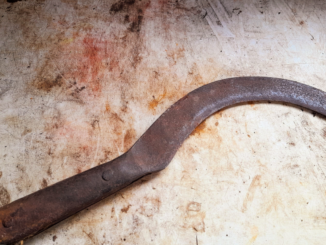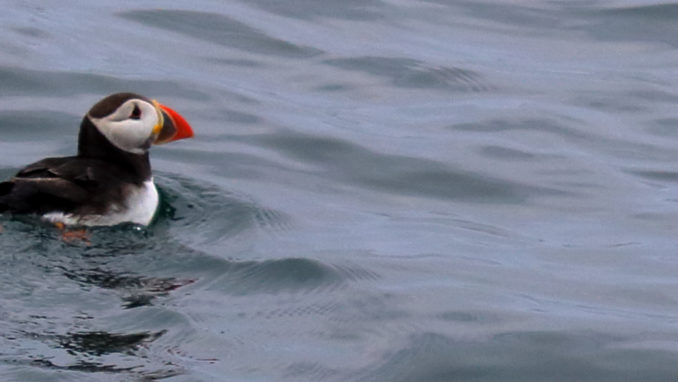
© Colin Cross, Going Postal 2023
Why a Puffin you may (or may not) be asking yourselves, but there’s no great mystery or even significance behind the header picture of my latest ramblings being of our “Spirit” bird. I’ve made the pilgrimage to The Farne Islands again this year. Unfortunately, the bird flu outbreak, which has the RSPB in full on protective mode, forestalled us landing, however, I did manage to get a couple of grainy shots of these annual visitors to our shores as they went about the business of collecting the sand eels on which they feed their young. If money wasn’t a problem and I wasn’t so fully committed to the greenhouse, I think I could seriously consider relocating to the North East of England, it’s a fine part of the world with a rich history, great beaches and (mostly) friendly people. There’s little in the way of the fabled “cultural enrichment” too, which some (if not all) might consider an added bonus. While there we paid a visit (amongst other places) to Preston Tower, once the home of Sir Guishcard Harbottle, who died (reputedly at the hands of James 1v, having engaged with him in hand to hand combat) at Flodden Field in 1513. The history of the tower is documented in easy to use folders and it hasn’t been too “sanitised” as a building, which lends itself nicely to the story. Well worth an hour or so of your time, if you’re out that way and you like that sort of thing.
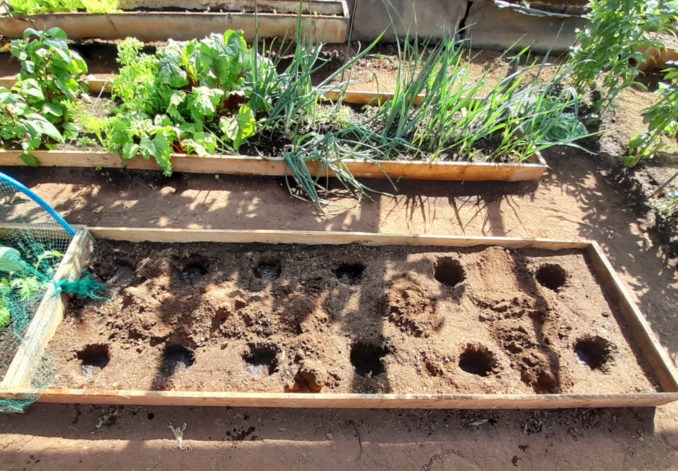
© Colin Cross, Going Postal 2023
Dave and I uncovered the last of the (slightly) raised beds in preparation for the planting out of the pepper and chili plants, only to discover squatters. A mouse had made its way under the boards and commenced to burrowing a shallow nest, which at first sight appeared to have been occupied by a solitary critter. We’d caught a glimpse of a small creature scurrying away and, knowing just how hungry mice can be for fresh green shoots decided we’d best set traps, just in case it decided to return. It wasn’t long before the loose earth (which I’d raked level) began to move and, before we knew it, a brood of tiny, now (as we thought) abandoned “fuzzies” began to make their appearance. This was all a bit disconcerting (and fascinating) for me but Dave, a countryman born and bred, took charge and disposed, as humanely as possible in the circumstances, of the whole brood, working on the theory that they’d be unlikely to survive anyway. The holes were duly dug and fertilised, and that little diversion, was that (or so we thought).
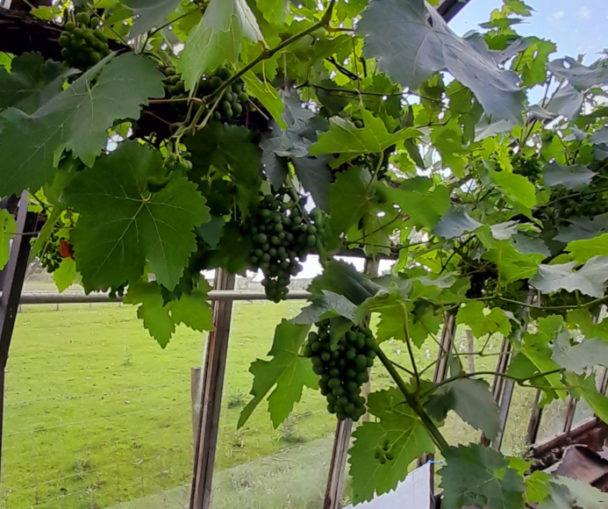
© Colin Cross, Going Postal 2023
As previously mentioned, I decided on a bit of a radical haircut for the vine. Earlier worries that it may not have survived the winter were thankfully misplaced and it had taken on a life of its own over recent weeks. I’d envisaged it being both a time consuming and boring endeavour, requiring me to keep coming down off the beer crate to check each section before attacking with the secateurs without taking too much out. The theory’s simple, cut each shoot back two leaves beyond the last viable bunch and remove any bunches which don’t look as if they’ll come up to snuff. Didn’t need the beer crate, as it turned out, Dave on secateurs and me on pointing the way, and the whole job was successfully completed in less than an hour. Teamwork…..innit?
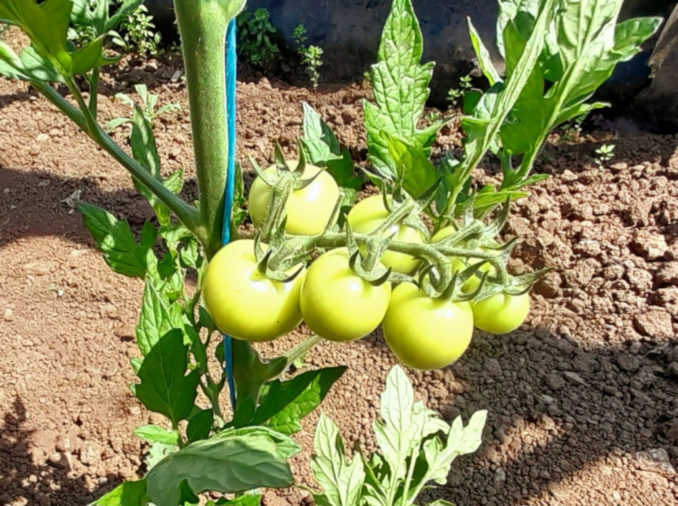
© Colin Cross, Going Postal 2023
All thirty tomatoes in the ground, along with the five still in pots, now have fruiting trusses and I’ve started the feeding regime. I’m still using liquid Vitax organic concentrate (I feed three times a week) but every third feed is with the “nettle brew” I’ve been bringing along. If the smell is anything at all to go by, then I’m guessing it must be beneficial at best and benign at worst. If this little truss is anything to go by, I think they’re Tigrella, then there should be a bountiful and varied harvest starting within three to four weeks.
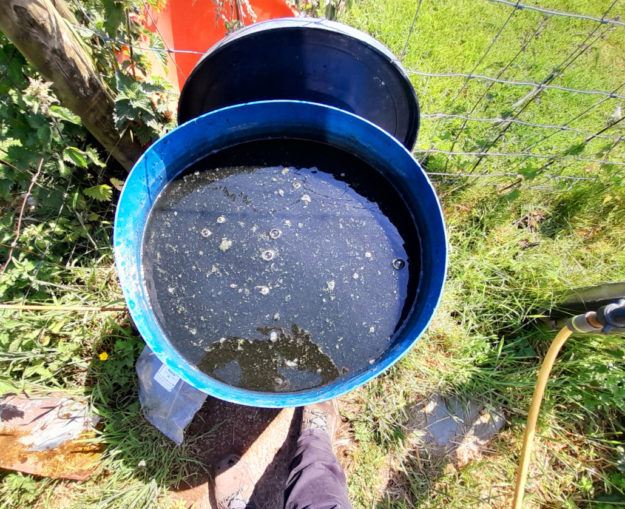
© Colin Cross, Going Postal 2023
The aforementioned nettle potion, I lift the lid most mornings to give it a top up, when needed and to take in, albeit briefly, the heady and pungent aroma. The bubbles form, quite naturally, from the gases being released (I think) and I also give it a good stir, to loosen any gunk which hasn’t yet broken down. I’m still planning on doing at least one more half butt, but two would be better. Making the leap of faith from bought in feed to purely self created is something I look forward to with equal amounts of excitement (I am a Yorkshireman after all) and trepidation. As always, we shall see what happens.
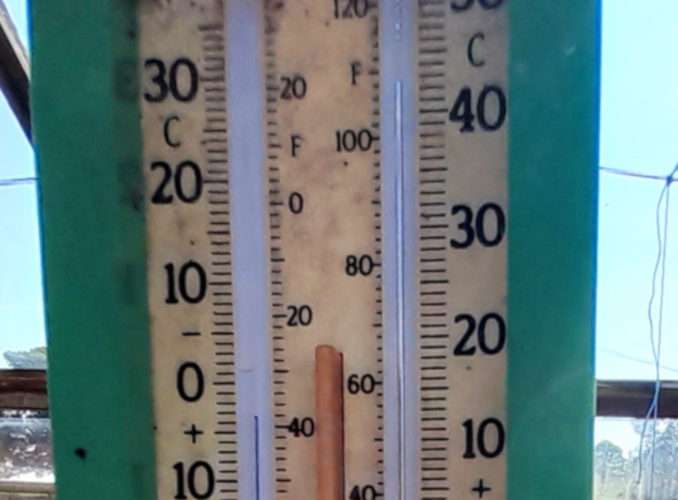
© Colin Cross, Going Postal 2023
This “Climate Change” business isn’t going away either; I mean, who knew that English summers could get quite warm, especially early on in the season? To be honest, the continuing levels of sunshine make it hard work to keep on top of all the jobs that need doing on a daily basis and my water usage has been high so far this year. I try to get round the watering, tub filling and the like before it gets too warm, I’m probably drinking three or four pints of water a day when it’s like it has been recently, but I do try to get out before around noon. When the mercury rises above the 100*F you know it’s time to get out and leave everything to its own devices, as it were, there’s only so much sweat one can give in pursuit of vegetable excellence.
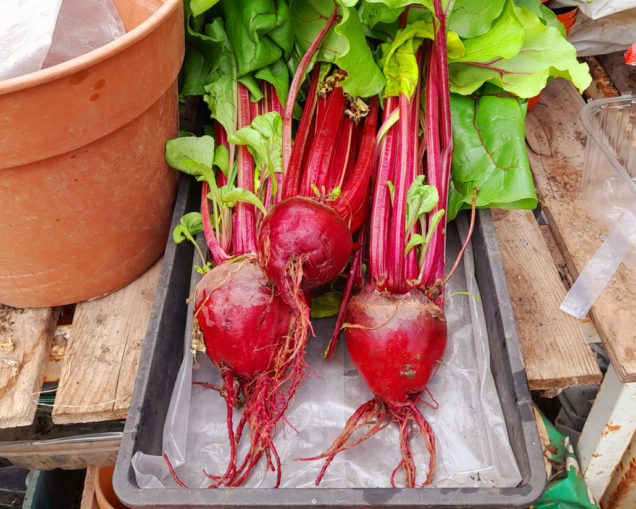
© Colin Cross, Going Postal 2023
Never had a great deal of real success with beetroot, but I think I’ve cracked it with this particular seed variety (don’t ask, I can’t remember). These three beets weren’t over blessed with root, something which has happened previously, and I planted them deep enough, this time, to not have to lose too much “off the tops”. I made three 200 gram (seven ounce) jars of beetroot and horseradish relish from them, sadly, I’m struggling to find fresh horseradish, so I’m having to buy a decent quality jar and wash the gunk off it before use. The addition of a teaspoon of chipotle paste has added a little extra “kick” to this pickle, which eats well with cold meats and cheeses.
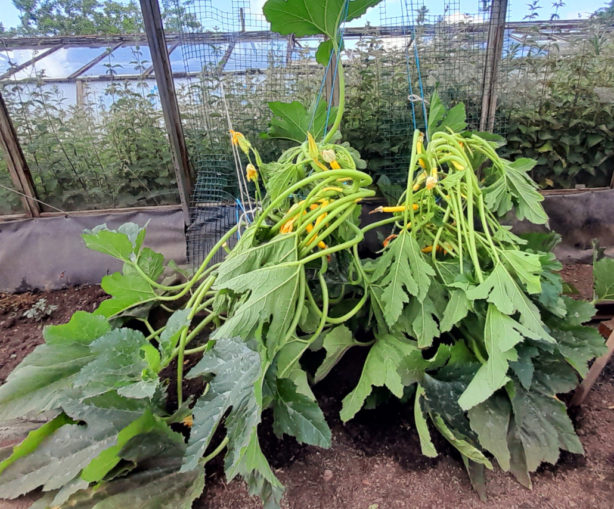
© Colin Cross, Going Postal 2023
I grow courgettes (for the benefit of any new reader) primarily to use as a natural thickener for tomato soup, mainly because they taste of nowt and cooks down very easily, they can fill our a dish of roast summer veg, too, so long as they’re well seasoned. I always set at least two seeds off, for fear of one not germinating and I invariably (last three years anyway) end up planting them both, simply because I can’t bring myself to discard a healthy plant. I’ve tried giving one away, but it seems, contrary to Vegan opinion, that no one actually likes courgettes at all. This yellow variety is supposed to be a climber, I suppose, if I could be bothered to do some research, I’d discover how to “train” them properly, but for now I’m hanging them from strings and hoping for the best. I wish the toms would hurry up, I’d have a use for them all.
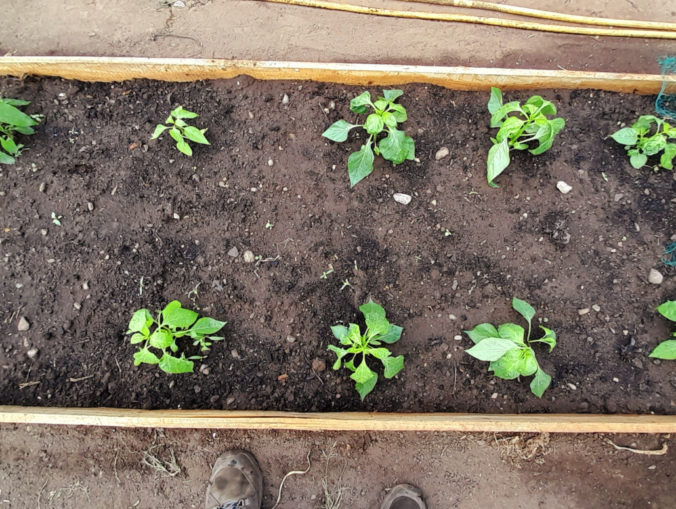
© Colin Cross, Going Postal 2023
The chilies and peppers are in, fifteen in total, although some look decidedly more healthy than others. As used as I am to not getting everything right, this is, for me, an epic fail. I’ve had great capsicum harvests for a couple of years now and they’re (at least in theory) some of the easiest things to grow, they take little nurturing and don’t mind being left without water for several days, but I’ve royally cocked up, and all for the sake of trying something “new” instead of sticking to the tried and tested. Ah well, lessons, as they say, will be learned (so long as I don’t forget, come next February/March time).
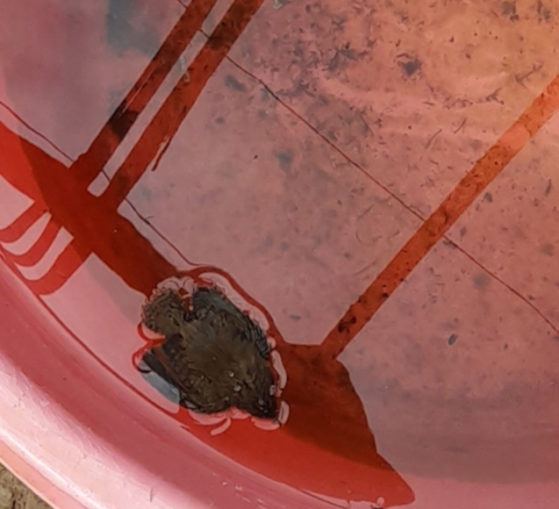
© Colin Cross, Going Postal 2023
I set the traps and caught, quite quickly, what I assumed to be the mother of the recently despatched brood of young mice. As of yesterday (19/06) six more mice have been lured to their deaths by a smear of peanut butter on a conveniently placed trap. At least it’s quick. One day last week I inadvertently left the lids off the water tubs when I closed up for the night. We have lots of wrens which take advantage of the gaps in the old dry stone walls (for nesting) and I’d noticed a couple of them taking bugs in the greenhouse, obviously to feed their young. They’re a joy to watch, going about their business. I returned the next day to find a fledgling wren drowned in a water tub, one of its parents was nearby, obviously in some distress. The next day, on checking the mouse traps, I was much discombobulated to find one of my friendly slug eating toads with one of its front legs caught in the jaws (of a trap). It was clearly in pain and tired, so I’m guessing it’d been there for a while. I didn’t even take the time to photograph the poor thing, I freed it and, I suppose, by dint of it having three good legs, it was able to drag itself away from the scene, hopefully to go on to live a life as full as it’s possible for a three legged toad to live. This last week a man in Nottingham went on a killing spree. He was an immigrant who’d been afforded the opportunity to build a life for himself but who chose, for reasons which no doubt will become clear, to eschew that opportunity and instead set out on a rampage which could well have cost far more innocent, blameless lives than it actually did. I feel bad for the mice, even now, although I also know there was little else I could have done if I didn’t want the greenhouse overrun. I was sad for both the wren (if only I’d put the lids on the tubs) and the toad (injured by circumstance, not design), because empathy is a natural human emotion. Why then do some people, for no apparent reason, see the taking of another human life as a perfunctory and detached act? I struggle to come to terms with such behaviour, but it’ll keep happening and the excuses will keep being trotted out. We have enough wrong uns’ of our own, so why, when we know precisely what will inevitably happen (because experience and recent history bears it out) do we insist on importing more, without even checking whether or not those arriving on our shores intend us harm? Candlelit vigils and flowery speeches about “not giving in to hate” aren’t ever going to redress the balance, skewed as it is by corrupt, mendacious politicians who support government condoned mass immigration, legal or otherwise.
© Colin Cross 2023

